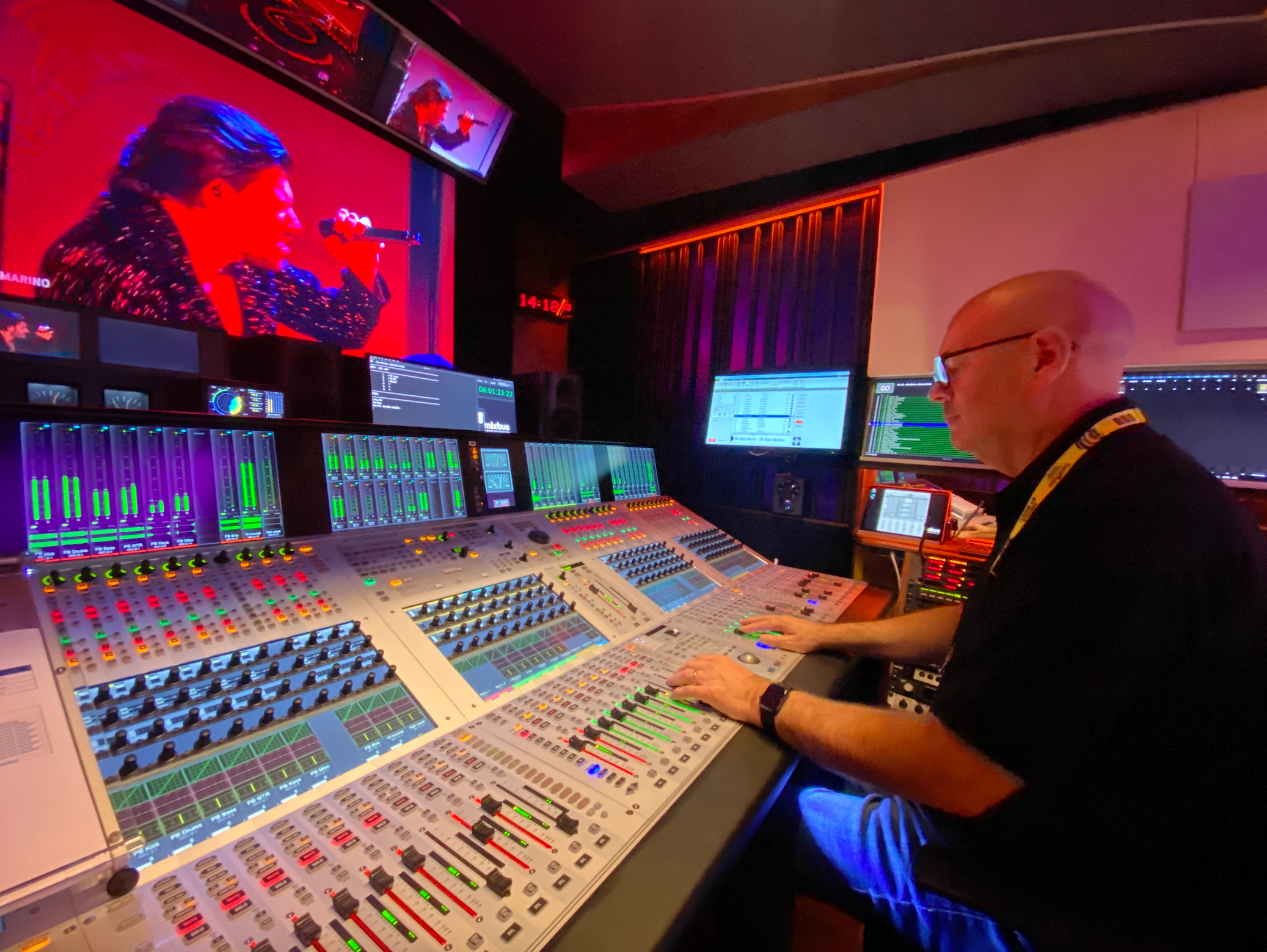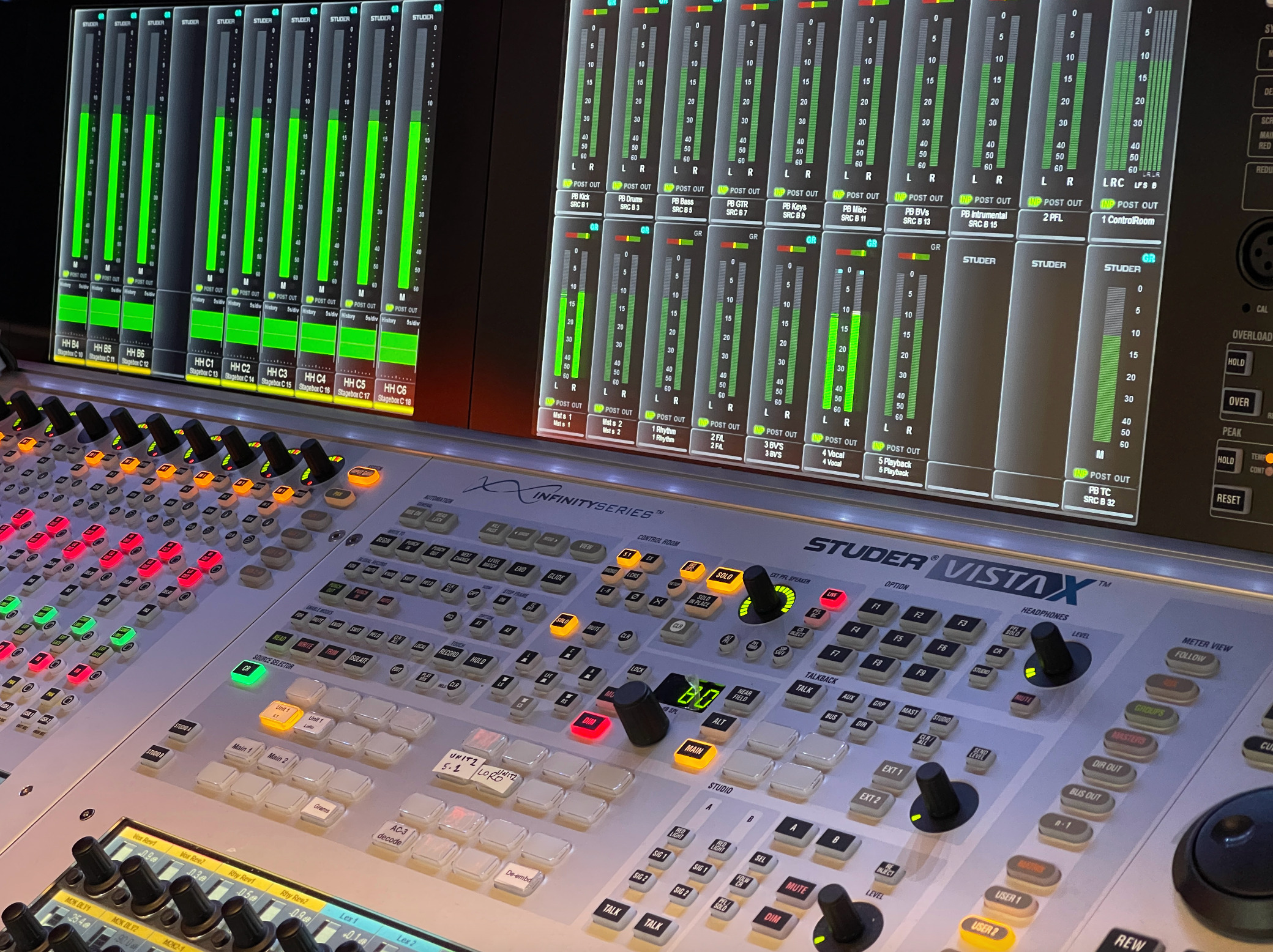The final of the 2023 Eurovision Song Contest took place in Liverpool, UK, and attracted a worldwide television audience of over 160 million people. Throughout the week-long extravaganza, music for all of the televised live shows and rehearsals was mixed on the Mixbus, a music and audio outside broadcast facility that now incorporates an Evertz Studer Vista X console.
Owned by BAFTA winner Conrad Fletcher’s SounDesign company, the Mixbus was chosen for Eurovision because it is kitted out with a plethora of high-end equipment, including an Evertz Studer Vista X console that has the ability to handle complex and technically challenging live music shows.
“The Vista 8 had always done a sterling job, but I’d been wanting to upgrade to a Vista X for some time in order to carry my business forward for the next 10 years,” he explains. “Winning the Eurovision project vindicated my decision to invest. The type of projects we do, especially live to cinema that makes up 50% of our workload, are complex and I honestly believe Evertz Studer is the only console manufacturer that can handle them. Nothing else comes close.”
BAFTA-winning Andy Tapley (of BBC Studioworks and known for his work on Strictly Come Dancing and RuPaul’s Drag Race) was the sound supervisor on the Mixbus for the Eurovision song contest, handling all mixing for the live shows and rehearsals, as well as being responsible for the console programming.








